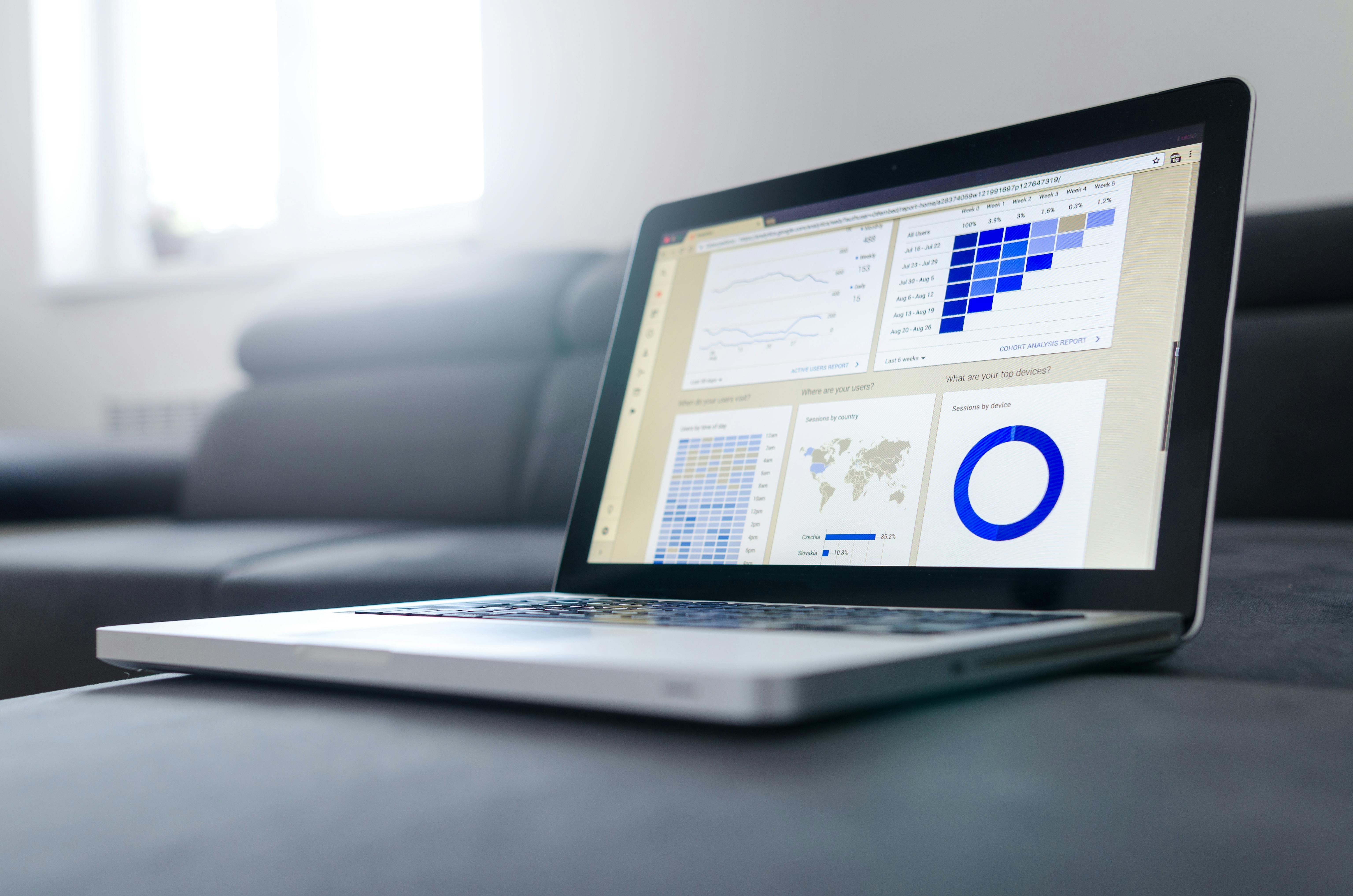
Data Storytelling: Communicating Complex Insights in an Engaging Way
Introduction
Data has permeated nearly every aspect of our modern world, influencing the way businesses make decisions, how governments shape policies, and the manner in which academics conduct research. Despite the ubiquity of data, one common challenge persists: How can we effectively communicate complex insights so that they not only inform but also engage and inspire action? The answer lies in data storytelling.
According to a recent survey, over 90% of business executives consider data analytics vital to the strategic growth of their organizations. However, translating raw data into meaningful narratives that resonate with diverse audiences is an art form that is often overlooked. In many situations, data is presented in stale spreadsheets or abstract charts that lack a human element, missing the opportunity to truly captivate decision-makers and stakeholders.
Data storytelling is the practice of weaving data, narrative, and visuals into a cohesive storyline that conveys insights in a way that is both memorable and actionable. Far more than simply displaying a chart, data storytelling humanizes insights by situating them within a context, illustrating why they matter, and guiding the audience toward the most important takeaways.
The purpose of this article is to provide a comprehensive guide on the essence of data storytelling, its key components, techniques to make it more engaging, and practical insights to navigate common challenges. We will also explore real-world case studies that highlight the value data storytelling can bring to businesses, public sectors, and non-profit organizations. By the end, you’ll have actionable knowledge to enhance your own presentations, reports, and data-driven discussions with a storytelling framework that resonates.
1. Understanding Data Storytelling

What is Data Storytelling?
Data storytelling is an approach that combines three distinct elements—data, narrative, and visuals—to convey a compelling and understandable message. While traditional data presentations might rely heavily on static charts or raw figures, data storytelling integrates these figures into a broader narrative that illuminates why the data is significant and how it can be acted upon.
Data forms the foundation, providing the facts, figures, and evidence. Narrative serves as the connecting tissue that puts data into context, highlighting the emotional or human relevance of the insights. Visuals complement both data and narrative by making complex patterns more accessible, guiding the audience through the story’s key points.
This process goes beyond simple data presentation. Instead of listing figures on a slide, data storytelling often involves a structured sequence—akin to a plot—that leads the audience from a starting question or problem to a resolution or conclusion, all supported by credible data and clear visual aids.
Importance in the Modern World
The exponential growth of data across industries—be it marketing, finance, healthcare, or beyond—has led to an ever-increasing need for individuals who can translate raw information into actionable insights. Data storytelling sits at the intersection of analytical expertise and communication skills. As organizations seek to become more data-driven, the ability to explain complex analytical findings in a way that inspires confidence and drives decisions becomes paramount.
Consider the healthcare industry. A doctor or public health official analyzing trends in patient readmissions must not only understand the statistics but also communicate these trends effectively to hospital administrators, policymakers, or even patients. When done correctly, data storytelling can guide resource allocation decisions, shape health policies, and ultimately save lives. Effective data storytelling helps us improve the chances that the insights we uncover through analysis actually get implemented by decision-makers.
In marketing, data storytelling helps teams demonstrate the value of advertising campaigns, identify consumer behavior patterns, or forecast market shifts. Instead of overwhelming audiences with spreadsheets of metrics like click-through rates, conversion rates, and ROI, a well-crafted data story can distill these metrics into a coherent storyline that underscores the underlying trends and strategic recommendations.
2. The Elements of Effective Data Storytelling

The Role of Data
At the heart of every data story lies the data itself. Selecting and vetting the right data is critical because inaccuracies or irrelevancies can undermine your entire narrative. For instance, if your goal is to showcase how a new product feature has boosted user engagement, you must source reliable data points—user logs, engagement metrics, and feedback surveys—while ensuring they are free from errors or biases.
Context amplifies the meaning behind your data. A 5% increase in sales might seem insignificant until you compare it against competitor trends or a historical average. Similarly, a correlation between two metrics needs a broader context to avoid misleading conclusions about causation. By situating data within its relevant backdrop, you guide your audience to interpret the figures as part of a larger story rather than isolated statistics.
Crafting the Narrative
A narrative is the thread that ties your data into a cohesive and compelling storyline. One well-known storytelling approach is the hero’s journey, where you introduce a challenge (or conflict), explore the obstacles encountered along the way, and ultimately arrive at a resolution or key insight.
- Conflict-Resolution: Identify a central question or problem to solve. Use your data to clarify the nature of the problem, adding tension that propels the story forward.
- Climax and Insights: Present a turning point or discovery, usually drawn from the data analysis, revealing a hidden pattern or surprising trend.
- Denouement: Offer actionable recommendations, explaining how the newfound insights address the initial challenge and what steps to take next.
Humanizing your narrative is equally important. Even in highly technical fields, weaving in anecdotes, hypothetical scenarios, or real-world consequences can engage the audience’s empathy and curiosity. Instead of merely stating “There is a 30% chance of equipment failure,” you might explain how a technician could be alerted ahead of time, avoiding costly downtime. This transformation of raw data into a relatable storyline can be the defining difference between a forgettable presentation and one that leaves a lasting impact.
Utilizing Visuals
Visual elements, such as charts, graphs, and infographics, serve as the glue that holds together your data and narrative. Good visualizations can clarify complex relationships and make data more accessible, but they must be used judiciously. A complicated chart filled with excessive labels and colors can overwhelm and distract from the core message. Aim for clarity and simplicity.
Different visualization types suit different data scenarios:
- Line Graphs: Ideal for illustrating trends over time.
- Bar Charts: Useful for comparing quantities across different categories.
- Pie Charts: Most effective for showing proportions, though caution is required to avoid misinterpretation.
- Scatter Plots: Great for depicting relationships or correlations between two variables.
Additionally, color psychology and design principles play a role in visually guiding viewers. Choose a palette that complements your narrative and highlights key points without causing visual clutter.
3. Techniques for Engaging Data Storytelling

Know Your Audience
One of the most critical steps in creating a successful data story is to tailor your presentation to your audience. A C-suite executive may want high-level insights supported by big-picture figures, while a team of data scientists might require granular data points and detailed methodology.
- Technical Familiarity: Gauge how comfortable your audience is with statistical concepts or domain jargon.
- Time Constraints: Consider how much time you have to deliver your story. Shorter presentations might require a more concise narrative.
- Motivations: Understand why the audience cares about the data. Are they looking for cost-savings, improved processes, or innovations?
By centering the needs and preferences of your audience, you ensure that the information you present is relevant, digestible, and resonates at a deeper level.
Simplify Complexity
Data often comes in vast, complicated forms—thousands of rows in a spreadsheet, multifaceted algorithms, or advanced statistical techniques. However, your narrative should distill these complexities into a more approachable form. Achieving this might involve:
- Segmentation: Break the data into logical sections or categories, each with its own story arc.
- Comparisons and Analogies: Use everyday metaphors (“Imagine pouring water into different cups...”) to explain abstract concepts.
- Iterative Explanations: Start with a high-level overview, then gradually add layers of detail for those who want to delve deeper.
Simplification is not about dumbing down the content; it’s about making it accessible. Your audience should feel informed rather than overwhelmed. If you sense confusion, reevaluate your approach—perhaps by reducing the amount of data you present or by using more straightforward visual representations.
Use of Technology and Tools
Modern data visualization and storytelling tools can help transform raw numbers into interactive and visually appealing stories. Tools like Tableau, Power BI, or Looker Studio offer user-friendly interfaces for creating dynamic dashboards, while programming libraries such as matplotlib, seaborn, or D3.js provide flexibility for custom solutions.
Furthermore, the role of AI and automation is becoming increasingly significant. Automated data storytelling platforms leverage machine learning to surface insights, generate explanatory text, and even suggest the best chart types for your data. While these can speed up processes and uncover hidden patterns, a human touch remains essential for contextual interpretation and ensuring that the storyline remains authentic and relevant.
Ultimately, the goal is to find a balance between automation and customization. By combining the power of intelligent tools with human creativity and narrative skill, you can craft stories that capture attention and motivate action.
4. Challenges and Solutions in Data Storytelling

Common Pitfalls
Even with the best intentions, data storytelling can falter if certain pitfalls are not addressed. Some of the most frequent issues include:
- Data Overload: Cramming too many statistics into a single narrative can cause confusion and dilute key insights.
- Misinterpretation: Presenting correlations as causations or overlooking context can lead to inaccurate conclusions.
- Lack of Narrative: Simply displaying charts without providing a coherent storyline leaves the audience wondering “So what?”
- Neglecting the Audience: Using overly technical language or failing to address the audience’s core interests undermines engagement.
These pitfalls underscore the need for careful planning, a clear understanding of the audience, and a balanced approach that emphasizes both accuracy and engagement.
Overcoming Challenges
While pitfalls are common, they are by no means insurmountable. Some strategies to overcome these challenges include:
- Iterative Feedback: Practice your data story on a small group before presenting to a larger audience. Incorporate their feedback to refine clarity and impact.
- Focus on Key Insights: Identify the one or two main takeaways your audience should remember. Center your narrative and visuals around these points.
- Check for Accuracy: Always verify your data sources and calculations. Consider including footnotes or references for transparency.
- Balance Detail and Overview: Provide essential context while offering more detailed breakdowns for those who seek deeper insight.
By systematically addressing these areas, data storytellers can mitigate confusion and ensure that their insights are not only heard but understood and applied.
5. Case Studies: Successful Data Storytelling

Real-world examples provide tangible proof of how effective data storytelling can drive change. Below are three illustrative case studies showcasing data storytelling in business, the public sector, and non-profit organizations.
Example 1: Business Application
A global e-commerce company faced stagnant growth in its mobile application. While the data team had extensive user metrics—such as bounce rates, session durations, and in-app purchases—these stats were presented in lengthy spreadsheets that failed to inspire strategic changes. Recognizing the problem, the company brought in a data storytelling expert who transformed these spreadsheets into a succinct narrative.
The expert framed the story around a fictional user persona, “Alex,” walking through Alex’s typical journey within the app. Visual dashboards illustrated key pain points, like abandoned shopping carts at checkout. By focusing on the user experience, the narrative clarified how even minor improvements (e.g., a single-click checkout button) could significantly increase conversion rates. This data-driven story convinced stakeholders to invest in app design overhauls, ultimately leading to a 15% increase in mobile sales over the next quarter.
Example 2: Public Sector
A city government needed to communicate the importance of a new recycling program to residents. Traditional leaflets, filled with percentages of landfill waste and cost-saving estimates, failed to inspire the community. The city’s environmental department used an interactive online dashboard that displayed the immediate effects of recycling on local landfills.
They integrated storytelling techniques, narrating the journey of a single plastic bottle from disposal to recycling plant, to eventual transformation into a new product. Infographics showcased how each recycled bottle helped reduce carbon emissions. This personalized narrative, rich with before-and-after visuals, led to a 25% increase in community recycling participation within six months.
Example 3: Non-Profit Impact
A global health non-profit struggled to convey the impact of its malaria prevention initiatives to donors. Previous presentations offered metrics such as “Over 100,000 mosquito nets distributed,” but failed to illustrate the personal and societal benefits of the program.
To address this, the non-profit created a compelling video narrative that featured interviews with families who benefited from these mosquito nets, interspersed with data points showing a significant drop in malaria cases. Visual charts overlaid on real-world footage illustrated improved community health outcomes. The result was a dramatic increase in donor engagement and funding, enabling the non-profit to expand its efforts to additional regions.
6. The Future of Data Storytelling

Emerging Trends
As technology evolves, data storytelling is poised to become even more interactive and timely. One emerging trend is the rise of interactive dashboards that allow audiences to explore datasets themselves, customizing their view and diving deeper into areas of particular interest. Another is the advent of real-time data narratives, where updates are integrated into ongoing stories, keeping stakeholders informed of changes as they occur.
Virtual and augmented reality technologies are also making inroads, enabling immersive data experiences that can simulate scenarios or show data in 3D formats. These innovations, while still nascent, hold the promise of taking data storytelling beyond static screens into more experiential realms.
The Role of Data Literacy
While tools and techniques are advancing, the human element remains vital. Data literacy—the ability to read, understand, create, and communicate data effectively—is becoming an essential skill set. As data literacy improves across the workforce, data storytellers will find more receptive audiences capable of engaging with nuanced analytical discussions.
Companies and educational institutions are increasingly investing in data literacy programs, understanding that a data-literate team can interpret insights more effectively, challenge assumptions, and collaborate on data-driven decisions. This collective fluency in data paves the way for richer narratives that are grounded in shared comprehension rather than abstract technical jargon.
Conclusion
Throughout this article, we’ve explored the multifaceted nature of data storytelling—a process that fuses data, narrative, and visualization to communicate insights in a manner that is both accessible and inspiring. We began by defining what data storytelling is and why it matters in our data-saturated world. We then delved into the core elements—selecting and contextualizing data, crafting engaging narratives, and using visual tools to illuminate patterns.
We also discussed key techniques to keep your audience engaged, from tailoring content to simplifying complex concepts. Addressing challenges like data overload and misinterpretation is crucial for a credible, effective story. Real-world examples demonstrated how this approach yields tangible results in diverse sectors, from e-commerce and city governance to global health.
As data storytelling continues to evolve, its fundamental premise remains unchanged: people connect with stories. Turning raw data into a relatable, coherent narrative equips decision-makers, stakeholders, and communities with the clarity they need to act. By embracing best practices in data storytelling, you can transform your data into meaningful narratives that resonate and drive change.
If you’re ready to explore deeper, the next section provides additional resources to help you refine your skills and stay at the forefront of data storytelling techniques.
Additional Resources
Whether you’re a seasoned analyst looking to polish your storytelling abilities or a newcomer curious about bridging the gap between numbers and narratives, continuous learning is key. Below are some recommended tools, readings, and courses to further your journey in data storytelling:
- Tools: Tableau, Power BI, Looker Studio, D3.js, Python libraries (matplotlib, seaborn, Plotly).
- Books: Storytelling with Data by Cole Nussbaumer Knaflic, Data Story by Nancy Duarte, The Grammar of Graphics by Leland Wilkinson.
These resources provide both theoretical grounding and practical tips, helping you refine every aspect of your data storytelling toolkit—from choosing the right chart type to honing narratives that capture the imagination.
What next?
We hope this deep dive into best practices for data cleaning and preparation in product analytics has inspired you to refine your own processes. Have you faced particular challenges or discovered creative solutions in your analytics journey? Share your experiences and questions via the contact page.
